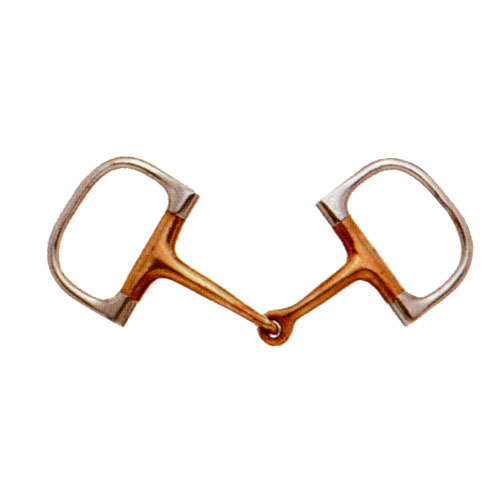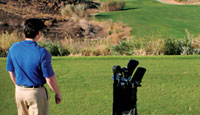New fishing Regs in Colorado effect some popular Reservoirs...
NEW FISHING REGS IN COLORADODENVER - The Colorado Division
of Wildlife is reminding anglers across Colorado that new fishing
regulations took effect Jan. 1. The new regulations were developed
through an extensive public process last summer and fall as part of the
Division's five-year review of fishing regulations in the state. The new
regulations were passed by the Colorado Wildlife Commission last
November.
New statewide regulations include a prohibition on
transporting bait fish between bodies of water and on transporting
crayfish on the Western Slope. Additionally, to protect native and
endangered fish populations in the Colorado and San Juan River basins, a
number of creeks, streams and rivers now allow for unlimited take of
non-native fish including channel catfish, largemouth bass, smallmouth
bass, northern pike, walleye, green sunfish, bluegill, bullhead, yellow
perch or crappie. This regulation expands existing regulations and
covers sections of the following waters: Animas River, Blanco River,
Colorado River, Dolores River, Eagle River, Florida River, La Plata
River, Los Pinos River, McElmo Creek, Mancos River, Navajo River, Piedra
River, San Juan River, San Miguel River and White River.
Anglers will find new water-specific regulations in the following locations:
Denver Metro Area: Cherry
Creek Reservoir: The bag limit and minimum size for walleye is three
fish, 18 inches in length. The regulation is designed to provide
additional protection of the walleye brood source.
Chatfield
Reservoir: The bag limit and minimum size for walleye is three fish, 18
inches in length. Similar to the new regulations at Cherry Creek, this
regulation is designed to provide additional protection of the walleye
brood source.
Cheesman Reservoir: Kokanee snagging is only
permitted during the month of September. The limit will protect the
kokanee brood source, while still allowing some snagging.
Northeast Colorado: Carter
Lake: The bag limit and maximum size for walleye is three fish, 21
inches in length. The possession limit for walleye is six fish.
Biologists hope the new regulations will enhance walleye harvest while
protecting a trophy fishery and bring the fishery back into balance with
the available forage.
Horsetooth Reservoir: Returned to
statewide regulations and bag limits for walleye. This should increase
harvest and allow the fishery to become more in balance with the forage
base.
Western Colorado: Connected Lake and Duke Lake:
Bag and possession limit and minimum size for largemouth bass is two
fish, 18 inches in length. This regulation will allow harvest of
largemouth bass while increasing the quality aspects of the population.
Highline
Reservoir: The bag and possession and minimum size for largemouth bass
is two fish, 15 inches in length. Smallmouth bass were dropped from the
regulation as they are not managed in Highline Reservoir.
Parachute
Creek, East Middle Fork: Added to the protected cutthroat waters list
and special regulations added (artificial flies and lures only, all
cutthroat trout must be returned to the water immediately upon catch).
Rifle
Gap Reservoir: bag and possession limit and minimum size for walleye is
one fish, 18 inches in length or over. This regulation will help
protect a declining walleye population while biologists work on a
long-term option to manage and stock walleye.
Trappers Lake: all
cutthroat trout must be returned to the water immediately upon catch.
This regulation is designed to help protect the population of
genetically pure cutthroats.
Yampa River: From Stagecoach Dam
downstream to Catamount Lake: Spawning areas (redds) are closed to
fishing as posted to protect spawning fish. This regulation will protect
large fish that are spawning and prevent destruction of redds while
fish eggs are incubating.
Sweitzer Lake: All fish must be returned to the water immediately upon catch.
North Central Mountains: Fraser
River: From the headwaters downstream to the confluence with St. Louis
Creek fishing is by artificial flies and lures only and all rainbow
trout must be returned to the water immediately upon catch. From the
confluence with St. Louis Creek downstream to the Colorado River the bag
and possession limit for trout is two fish. These changes will bring
regulations in line with adjacent areas protect populations from
overharvest.
Green Mountain Reservoir: the bag and possession
limit for lake trout is eight fish. This will encourage the harvest of
an expanding lake trout population and help conserve the kokanee
population.
Lake Granby regulations were amended to remove inlet streams from the lake regulations.
Trappers
Lake: all cutthroat trout must be returned to the water immediately
upon catch. This regulation is designed to help protect the population
of genetically pure cutthroats.
Yampa River: From Stagecoach Dam
downstream to Catamount Lake: Spawning areas (redds) are closed to
fishing as posted to protect spawning fish. This regulation will protect
large fish that are spawning and prevent destruction of redds while
fish eggs are incubating.
Southeast Colorado: New
regulations include a prohibition on transporting bait fish between
bodies of water anywhere in the state except in Bent, Crowley, Kiowa,
Otero and Prowers Counties.
Arkansas River below Pueblo Dam:
Fishing by flies and lures only; all trout over 16 inches must be
returned to the water immediately. This new regulation affects a
two-mile stretch of river and is designed to improve the quality of the
fishery by protecting larger trout.
Trinidad Reservoir: Daily
bag and possession of walleye & saugeye is five fish, but only one
of those can be larger than 18 inches. Biologists hope to enhance the
number of larger fish to provide quality fishing opportunity at Trinidad
Reservoir.
Adobe Creek, John Martin, Nee Noshe, Nee Gronde
Reservoirs: The daily bag limit for walleye and saugeye (in aggregate)
is five and the possession limit is 10. All walleye and saugeye less
than 15 inches in length must be immediately returned to the water. The
regulation change at these popular fisheries is designed to protect
smaller year classes of fish while providing harvest opportunity for
anglers.
Pueblo Reservoir: Underwater spearfishing is now
allowed for wiper, channel catfish, blue catfish and flathead catfish.
The bag and possession limit for wipers is five, and for catfish is five
fish in the aggregate.
Henry, Two Buttes, and Thurston
Reservoirs: Fishing by trotlines and jugs is now permitted. This
regulation change expands trotlining and jug fishing to most of the
larger reservoirs in southeast Colorado.
Pikes Peak South Slope
Recreation Area Reservoirs: Although new fishing regulations are in
place, due to budget shortfalls for the city of Colorado Springs, these
waters will remained closed in 2011.
Durango Area: Piedra
River: From the Piedra River bridge on USFS 631 (Piedra Road)
downstream to the lower boundary of the Tres Piedra Ranch (1.5 miles
above US160), fishing is by artificial flies and lures only, all trout
must be returned to the water immediately upon catch.
Poage
Lake: Fishing is by artificial flies and lures only, bag and possession
limit and maximum size for trout is two fish, 12 inches in length.
Alberta Park Reservoir: Fishing is by artificial flies and lures only, bag and possession limit for trout is two fish.
Gunnison Area: Blue
Mesa Reservoir: The bag and possession limit for lake trout is
unlimited. No more than one lake trout greater than 38 inches in length
may be taken per day. This Regulation is intended to balance the fishery
by reducing the lake trout population.
Crawford Reservoir: Northern pike harvest restriction was removed to allow unlimited harvest.
East
River: Fishing is by artificial flies and lures only. The bag and
possession limit and maximum size for trout is two fish, 12 inches in
length.
Regulations at waters not listed did not change from the previous year and remain in effect.
In
all, the Wildlife Commission adjusted fishing regulations at more than
30 bodies of water statewide. Complete fishing regulations are available
online
Regulation
booklets for the upcoming fishing season are being printed and should
be available next month. Fishing licenses for the 2011 season take
effect April 1 and run through March 31, 2012. Licenses for the 2011
season will go on sale at license agents, Division offices, online and
by phone on March 15.For more information about Division of Wildlife go to: http://wildlife.state.co.us
TASK 8: Types of fish in your area? - Colorado has everything
TASK 2: Fishing in your region


